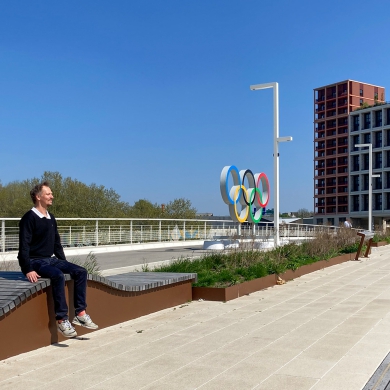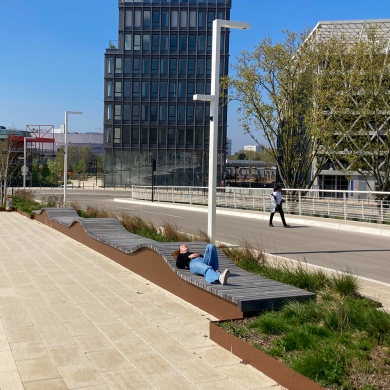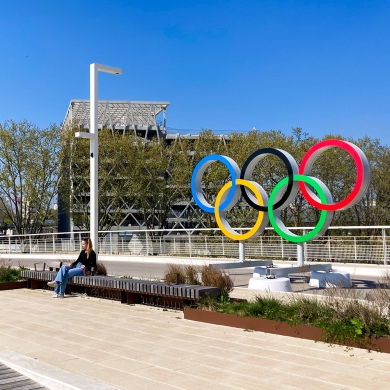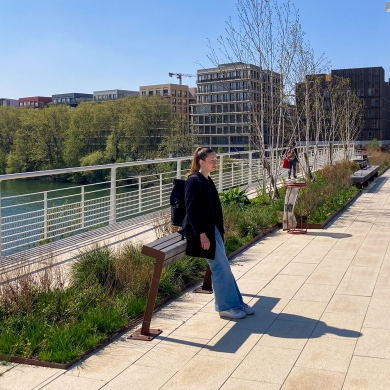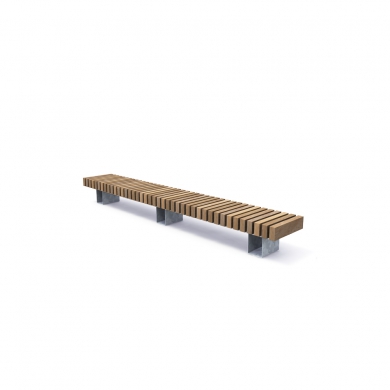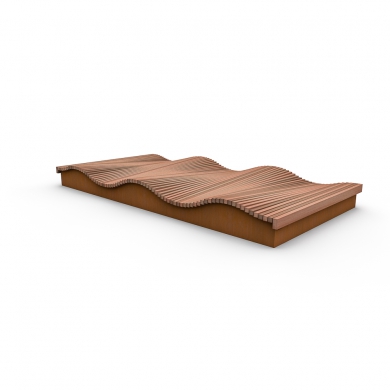The Louafi Bouguera Olympic Bridge, also known as the Olympic Village footbridge, serves as a pedestrian and cyclist bridge that crosses the larger arm of the Seine River, offering a vital connection between two parts of the Athlete’s Village for the duration of the Paris 2024 Olympic Games and today linking the municipalities of Saint-Denis and L’Île Saint-Denis. Designed by architects Thomas Lavigne of AOA and Cécilia Amor of Atelier C3A, the concept for the footbridge is based on the vision of a ‘Garden on the Water’ that transforms the structure from a simple transit route into a dynamic public space, complete with lush greenery and seating, that fosters relaxation, social interaction, and community engagement.
Weighing 1,500 tons, the steel footbridge was assembled at the port of Gennevilliers between April and October 2022 before being transported to its final location by barge. The structure spans 138 meters in length and 16 meters in width, and its elegant, fluid design, reminiscent of an athlete in motion, includes a nearly 4-meter-wide staircase and a viewing platform.This feature provides visitors with unobstructed views of the Seine and direct access to the newly redeveloped Quai de Saint-Ouen in Saint-Denis and the Quai du Châtelier in L’Île Saint-Denis.
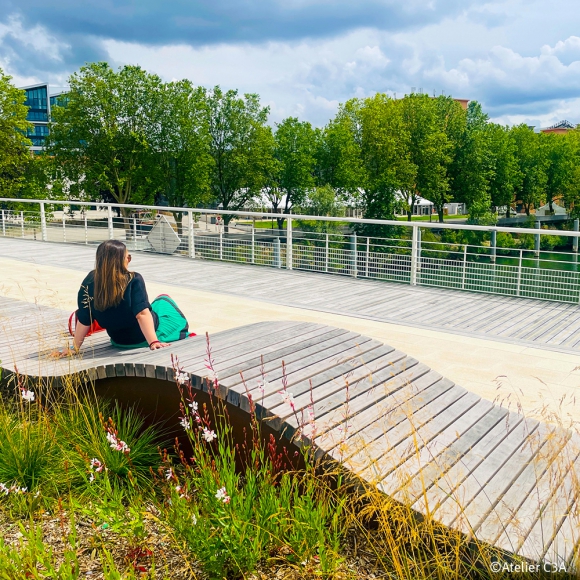
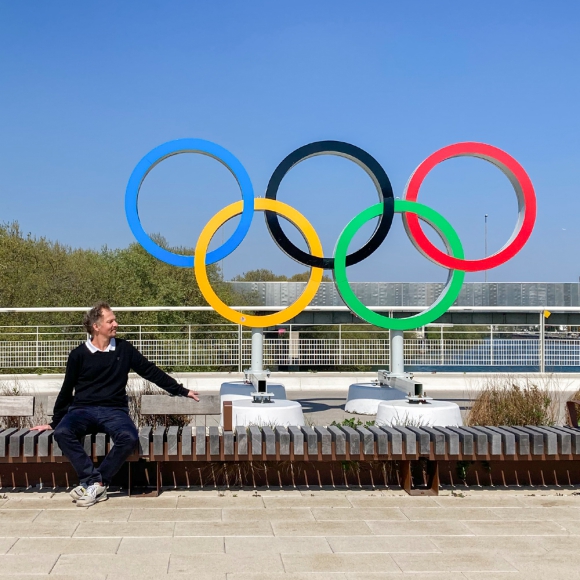
In bringing to life the architects’ vision for a dynamic public space, the footbridge integrates seating areas that encourage social engagement. With its customizable design, Streetlife furniture was a fit with this vision. An 18-meter-long Solid Podium Surf Isle by Streetlife runs along the water’s edge, offering functional yet playful seating opportunities while echoing the fluidity of the river’s movement with its wavelike profile. Alongside this, standard Rough&Ready bench modules, backrests and armrests provide a 6-meter-long seating feature that can accommodate a diversity of groups in many ways.
The furniture’s natural design aligns with the project’s broader ecological goals, creating a space that fosters environmental awareness while providing comfort and utility for the public. The choice of FSC®-certified hardwood as the primary seating material not only complements the natural surroundings and overall aesthetic but is essential to the longevity and sustainability of the design. Architect Cécilia Amor explains that the thick, durable wood sections ensure that the furniture will withstand the elements, providing exceptional durability and an extended lifespan. “We have chosen wood to fit perfectly into this natural and vegetal environment, in the heart of the Seine, a material that makes you want to sit down, that invites you to relax, and that guarantees resilient aging,” says Amor.
The emphasis on sustainability is not limited to the furniture; it permeates every aspect of the project. The footbridge’s construction involved 9,000m3 of concrete, with 88% of it being lowcarbon. In addition, 3,400 tonnes of steel were used, of which 11% was recycled. Surrounding the bridge is 2,625 m² of vegetation, including 74 newly planted trees, all chosen for their ability to thrive with minimal water. Rainwater is managed sustainably, without entering the stormwater system, and energy-efficient LED lighting with variable intensity is utilized to reduce power consumption.
A vibrant legacy of Paris 2024, the Louafi Bouguera Olympic Bridge is an ongoing symbol of environmental and social sustainability. Beyond its structural design, it has become a community hub, offering athletes, and then surrounding community residents and visitors a space to gather and connect. During the Olympics, the footbridge and wavelike podium captured attention on social media as the backdrop for a marriage proposal between Olympic athletes. This moment showcased how infrastructure can serve as more than a transportation route but a vital social connector that fosters shared experiences among people.
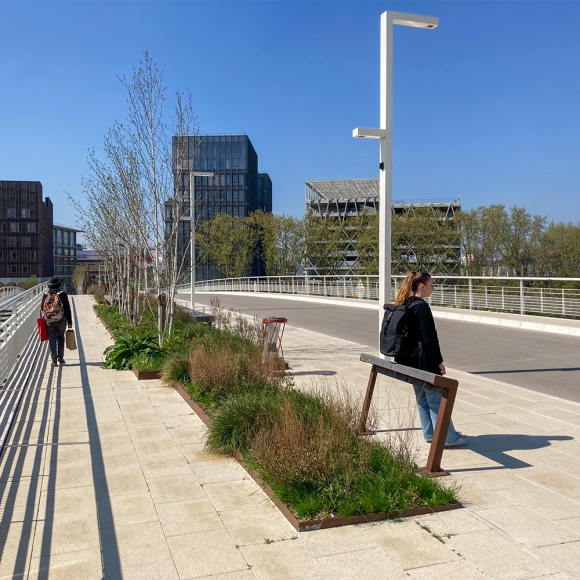
| Location | L’Île-Saint-Denis, Paris, France |
| Delivery | 2024 |
| Landscape Architect | Thomas Lavigne (AOA), Cécilia Amor (C3A) |

